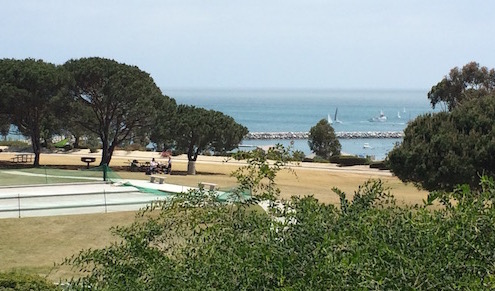
In a camera-phone world, there is still a time and place for a professionally shot and edited video. But on occasion, a DIY approach is good enough — and even preferable.
I’ve done it for professional purposes once — and, as with so many things, that makes me feel qualified to advise others. So here’s what I learned about how to shoot a selfie video.
1. Don’t Overthink It
It’s a natural tendency of analytical types to overthink everything. So when I got the assignment to create a promotional video for an upcoming speech, my immediate thoughts went like this:
- Where will I shoot it?
- Is there enough light in my office?
- My webcam is terrible. Will an iPhone be sufficient?
- Will my iPhone fit on my tripod?
- Where can I find a decent background that’s not too busy or so stark that it looks like I’m shooting a hostage video?
- Etc.
2. Learn from the Pros
Then I attended a PR industry conference in Laguna where I saw a video of a bunch of social media and marketing pros delivering their messages selfie-style via webcam and camera phones.
The technical quality was mixed, but that was totally outweighed by the strength of their content, their energy and the immediacy of it all.
One even shot his simply holding the camera at arm’s length. And he did it outside, so the light was great and the background was interesting.
So I got inspired. Here I am in paradise, on a cliff overlooking the Pacific — why not make that part of the story?
3. Keep It Short
The first thing I did was type out a few paragraphs of script answering the questions, “Why should people come to my session and what will they get out of it?”
I kept it short — just 128 words, which is less than a minute for the average speaker. That’s part of the beauty of the selfie video: you can only stand there with your arms outstretched for so long, so it enforces message discipline.
I didn’t try to memorize it word for word. I just went over it in my head a number of times until I got the gist down.
4. Bring the Energy
I knew I was going to shoot the video sometime during the conference. Then the right moment revealed itself to me: I had just done a presentation there and it went really well. I was feeling great and was still “buzzed” by the experience.
That to me is the number one thing: shoot your selfie video when you’re feeling great, and your energy will come right through the lens to the viewer. So do it after a solid workout, a good meal, a dose of caffeine — whatever gets you energized.
5. Pick Your Spot
So I grabbed my phone and walked outside to a spot overlooking the ocean. I made sure it wasn’t heavily trafficked by passersby and I listened to see if the background noise was at a tolerable level.
There was still plenty of light from the afternoon sun, so my face was lit, but it wasn’t harsh at that time of day.
I also raised the camera up above me — partly because that’s a more flattering angle for most people (no double chins) and partly to get the ocean in the background.
6. Do Multiple Takes — But Not Too Many
If you go for perfection, you’ll be shooting your video all day long. I gave myself a half-hour and didn’t even use all that time.
All together I shot maybe eight takes, though several of them were incomplete, either because I majorly messed up or a siren went off on the road below.
Every take was different, though the main points were the same. In the end I had two good videos to choose from, both of them under a minute.
Here’s the Result
I was pleased with the final product. I wish I’d held the camera more level, but that’s a small detail. And, of course, the front-facing lens on a camera phone isn’t the most flattering. (I suppose I could have used a selfie stick, but I have a moral objection to those …)
Spend a Moment, Not a Fortune
The other important thing? I didn’t waste a ton of time, money and mental energy trying to make it perfect. We all know how something that should be very simple can turn into a huge time-suck.
But this was just the right amount of investment. And the payoff so far has been pretty cool. The media person for the conference sent it to all the other speakers as a model for them to use. (I know, teacher’s pet!)
I’ll still do professional production when it’s called for, but for focused, quick-hit videos serving a specific, immediate purpose, there’s really no excuse not to do it yourself.
